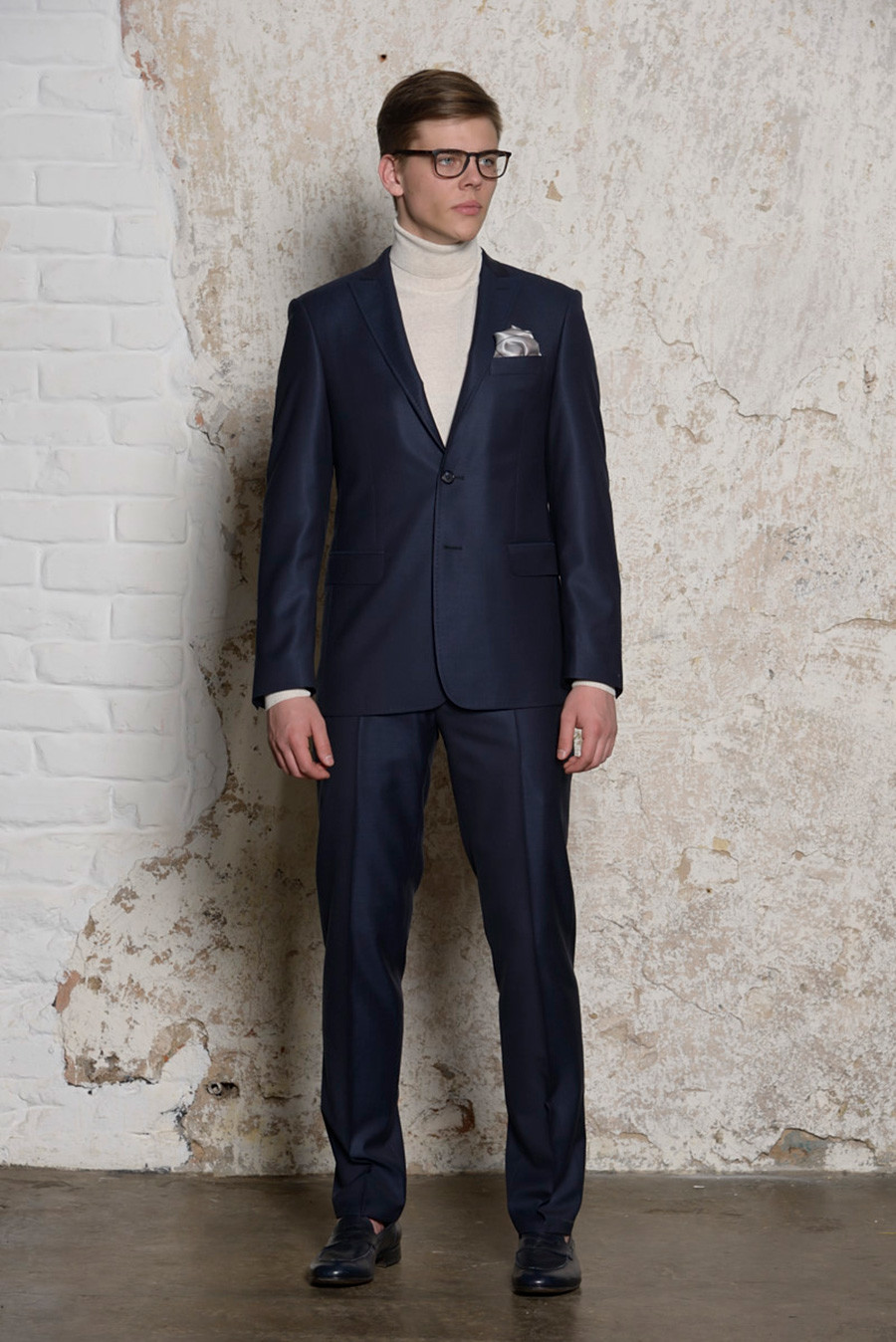10 brands born in the USSR and popular still
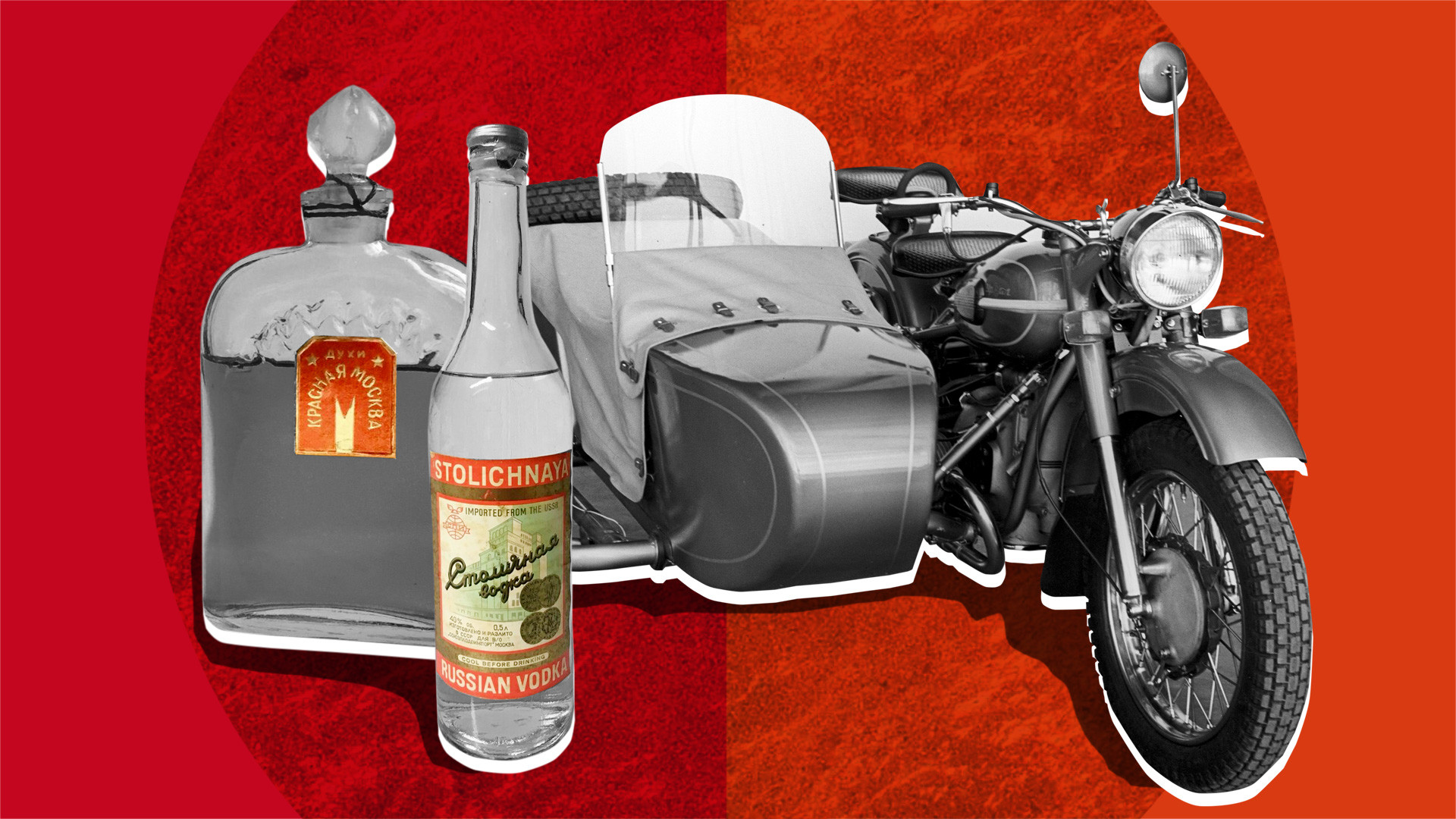
1. Krasnaya Moskva perfume
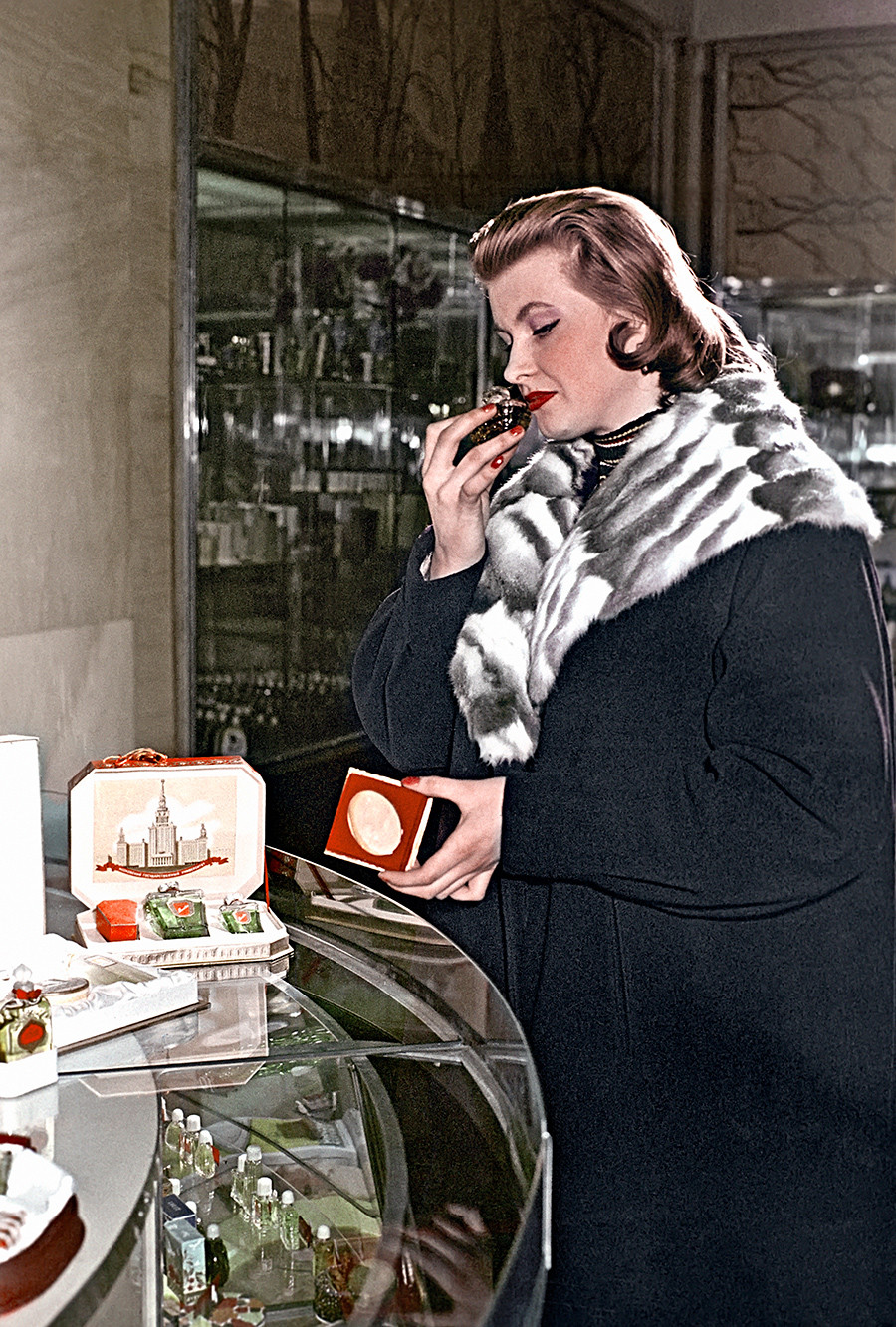
A customer at the counter of a perfume store in Okhotny Ryad chooses perfume. 1958
Vasily Malyshev/SputnikProduced by the Moscow factory Novaya Zarya since 1925, the origin story of the favorite perfume of generations of Soviet women has long been wrapped in mystery and legend.
According to one theory, Krasnaya Moskva (Red Moscow) was a variation on the perfume Bouquet de l'impératrice (Bouquet of the Empress) that Henri Brocard, the owner of a soap, lipstick and perfume factory, presented to the wife of Nicholas II, Empress Alexandra Fyodorovna, in 1913.
Others believe that Soviet perfumers were trying to replicate the iconic French scent, Chanel No. 5, while others are convinced that Krasnaya Moskva was a copy of François Coty's L'Origan, first released in 1905.
READ MORE: How is Chanel No. 5 perfume tied to the Romanov family?
According to another legend, the creation of Krasnaya Moskva was supervised by Polina Zhemchuzhina, the wife of Soviet Foreign Minister Vyacheslav Molotov. However, there is no documentary evidence to substantiate this or other versions.
The factory does not disclose the perfume’s full formula, but a 1973 issue of Chemistry and Life magazine described it as follows: "A delicate, warm, noble fragrance with a hint of orange blossom." At five rubles a bottle, the perfume was quite expensive. That money was enough to cover a family's monthly utility bills, nevertheless, women still queued for a bottle of Krasnaya Moskva.
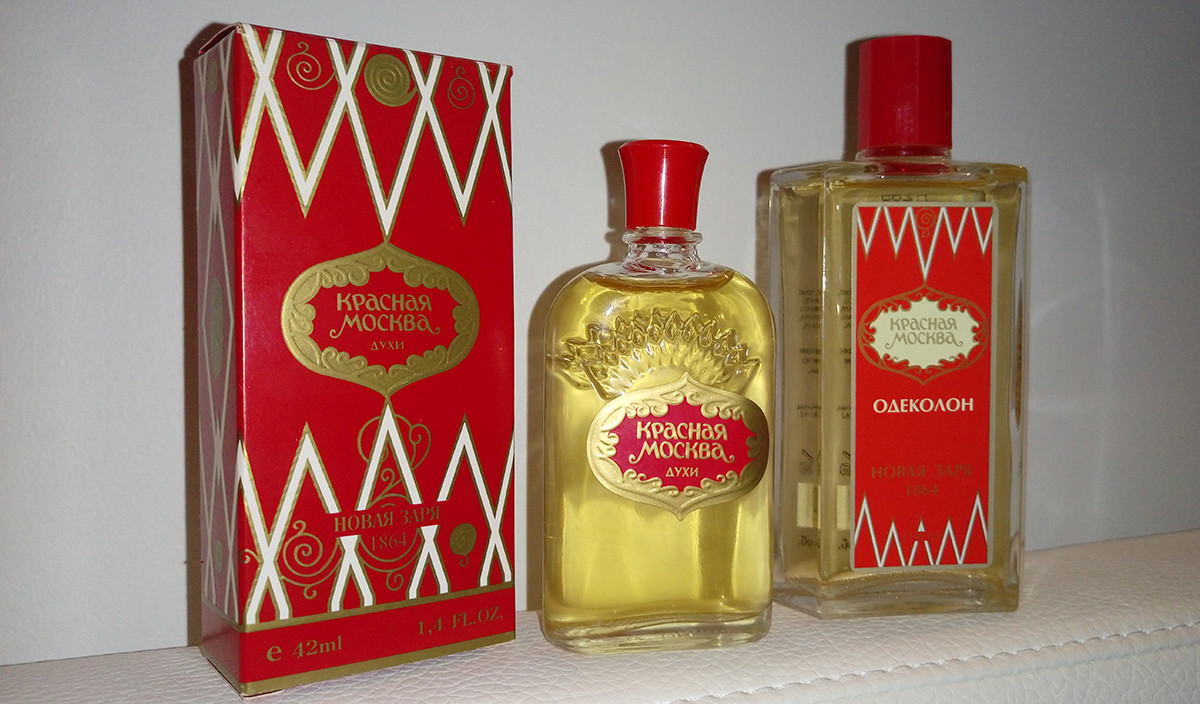
02-Perfume and cologne "Red Moscow" 2016 release
Vecherovskaya (CC BY-SA 4.0)By the 1990s, interest in the perfume waned when Krasnaya Moskva was seen as something old-fashioned. In 2004, the factory merged with French perfumers in a joint project called Novaya Zarya - Nouvelle Etoile. It continued to sell Krasnaya Moskva and even disclosed some of the elements of that scent - made from bergamot and neroli, with grapefruit, jasmine, roses and a trail of irises, vanilla, ambergris and beans.
Present-day buyers often complain that the modern Krasnaya Moskva has hardly anything in common with its Soviet-era predecessor, but there’s still one advantage - it sells at an affordable price of just 713 rubles ($9.6) for a 42ml bottle.
2. Two Balls gym shoes
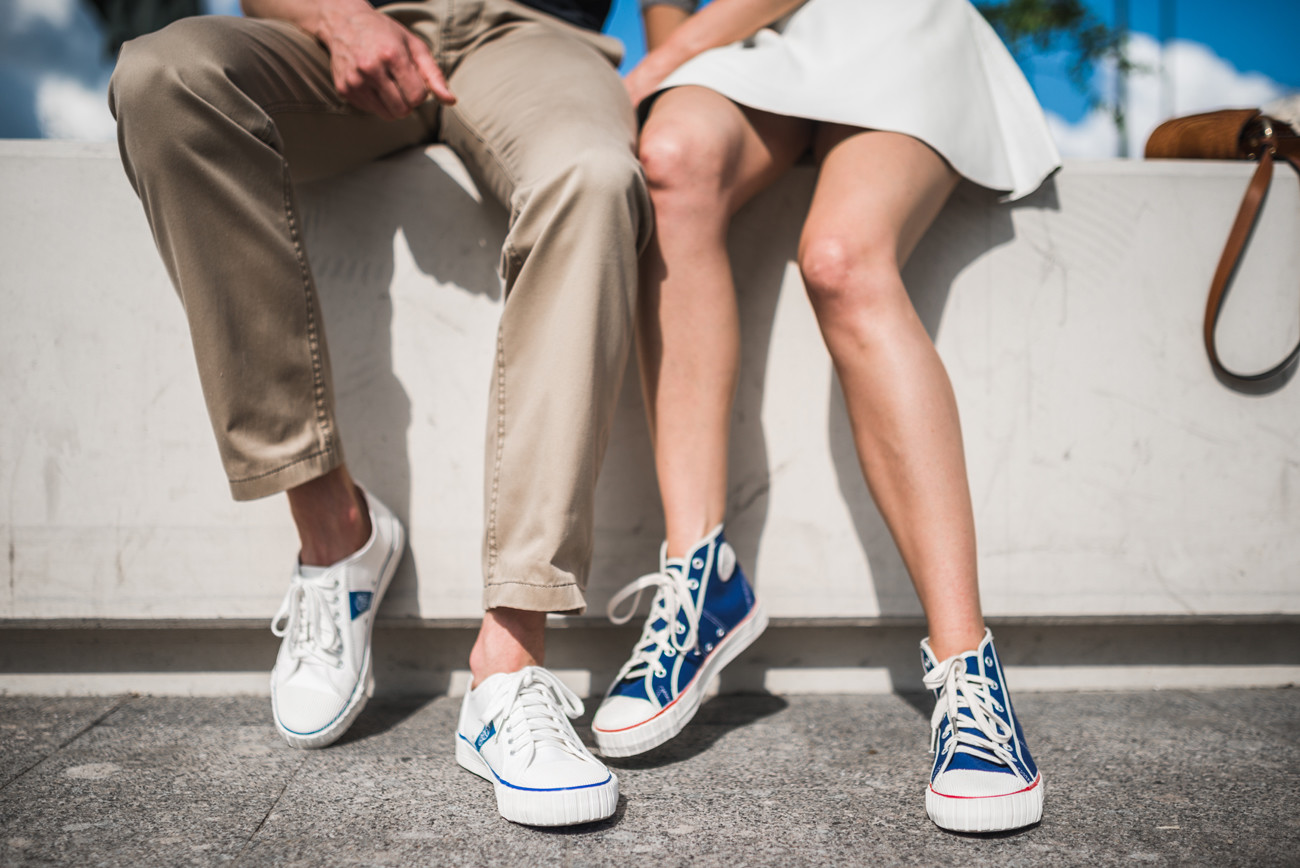
These durable, comfortable white gym shoes had a bold for their time design, - a logo and a pattern on the sole and a ribbed toe cap that first appeared in the USSR in 1965. Everybody wore them - from Yuri Gagarin and Viktor Tsoi, to the Wolf in the country's most popular animated cartoon, Well, Just you Wait! These gym shoes were particularly popular among young people, despite their rather high price of four rubles at a time when other sports shoes were available at 1.25 rubles a pair.
Around the 1990s, consumer interest switched from gym shoes to sneakers. Furthermore, after the collapse of the USSR, the Russian market opened to imported goods, which were in higher demand than their domestically-produced equivalents.

Classes at the children's tennis school of the Lokomotiv Sports Palace. Ukrainian SSR
Boris Kaufman/SputnikIn 2016, a graduate of the Faculty of Management at the Higher School of Economics, Yevgeny Raikov, revived the Two Balls brand and began selling gym shoes made according to the same GOST technology and quality standards. The only difference is a wider choice of colors and modern anatomical insoles, and the price, which starts at 4,200 rubles (about $57) per pair.
READ MORE: Sneaking back into fashion: How the ‘Soviet Converse’ made a comeback
3. Zenit cameras
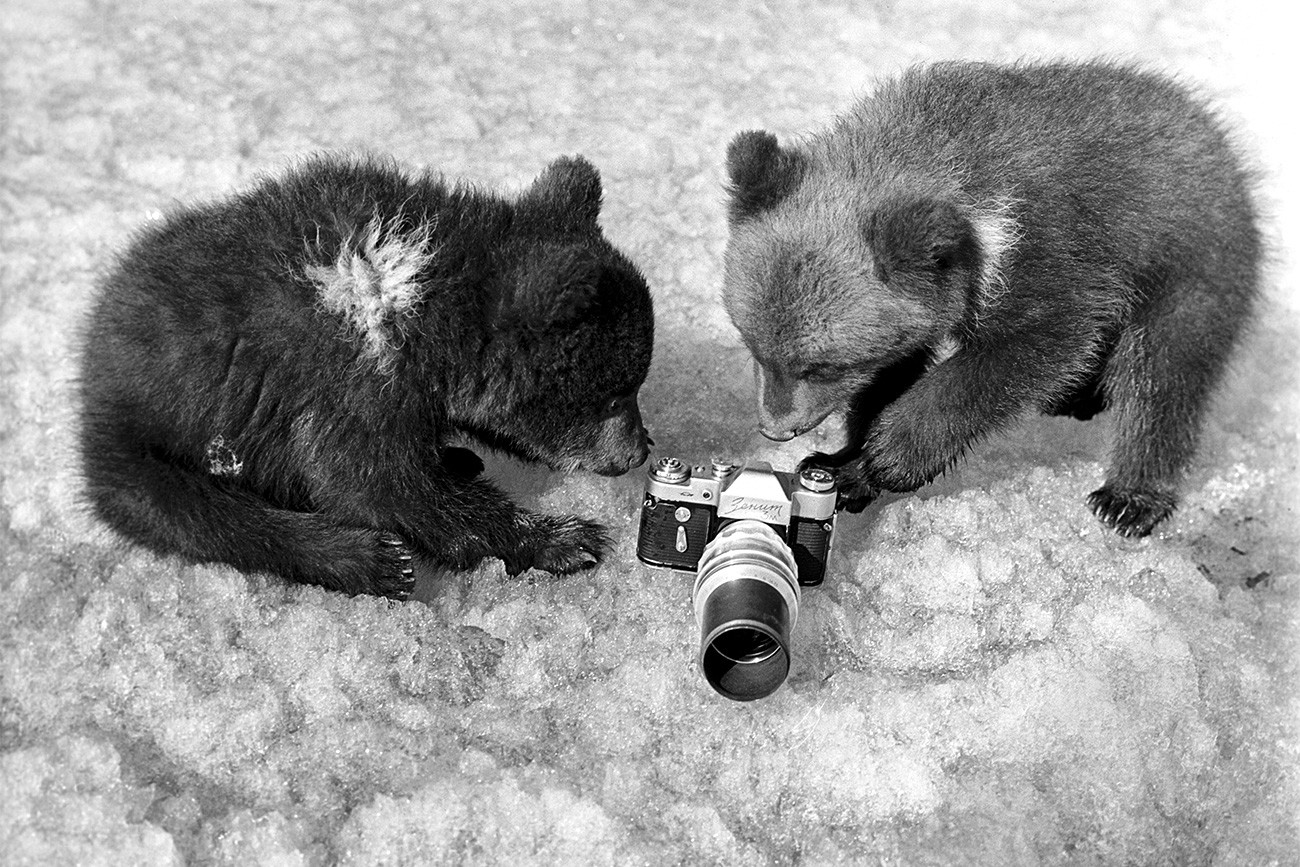
A warm grainy picture with a bit of a blur – these features endear Zenit cameras to modern amateur photographers, especially in combination with the Soviet Helios lense.
These cameras began to be produced at the Krasnogorsk Mechanical Plant in 1952, and different models of photographic equipment were made there until the 1990s. Depending on its configuration, a Zenit camera might cost from 90 to 300 rubles (i.e. a Soviet person's monthly salary, or several salaries), so it was considered a luxury item.
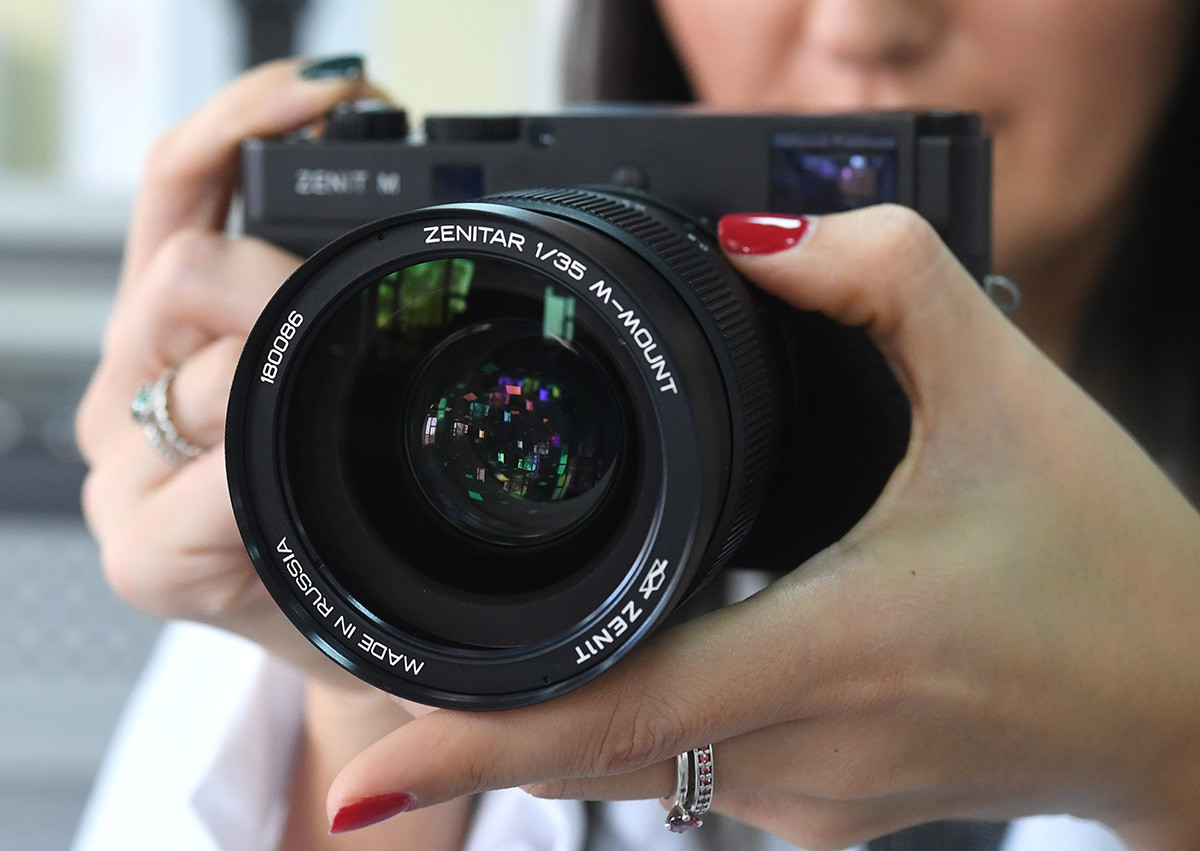
A new digital camera "Zenit-M" in the assembly shop of civil products and consumer goods at the Krasnogorsk plant named after S. A. Zverev in the Moscow region
Sergey Pyatakov/SputnikIn 2019, the plant began producing a digital mirrorless version of the Soviet Zenit M camera. Together with a Zenitar 1/35 lens, it costs 470,000 rubles ($6,300), so it is probably not surprising that the modern model is popular only with well-heeled fans of Soviet aesthetics. Everyone else buys old Soviet cameras on classified sites. Fortunately, there the price for the legendary cameras and lenses rarely exceeds 5,000 rubles ($67).
READ MORE: Zenit: the world’s most widely produced SLR camera
4. Alenka chocolate
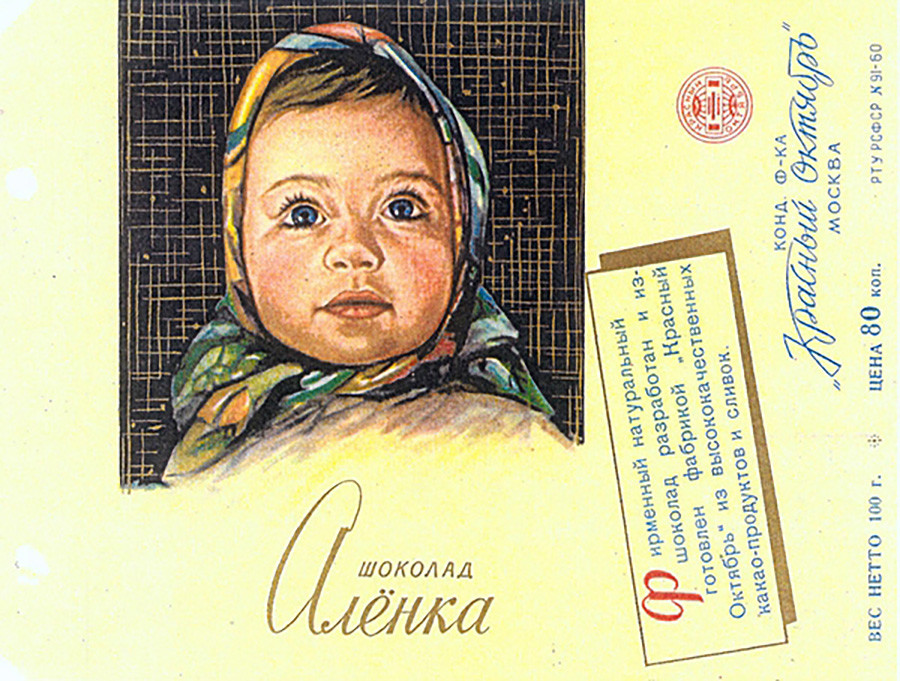
In the early 1960s, the Soviet government adopted a new food program, under which the USSR would produce affordable milk chocolate. The recipe was developed by experts at the Red October confectionary company in Moscow.
On the early wrappers, “Alenka” wore a blue headscarf and sometimes was holding a dog or a bunny. The factory wanted to have artist Viktor Vasnetsov's painting, Alyonushka, depicted on the wrapping, but a special industry commission rejected the idea. Then, the factory management held a competition, and a photo by journalist Alexander Gerinas, who had photographed his eight-month-old daughter, Lena, in a silk scarf, was declared the winner. The cute girl on the wrapper, combined with the attractive price of 80 kopecks (cheaper than a jar of mayonnaise at the time) quickly made the chocolate popular throughout the Soviet Union.
READ MORE: Who’s the girl from the iconic ‘Alenka’ chocolate bar?
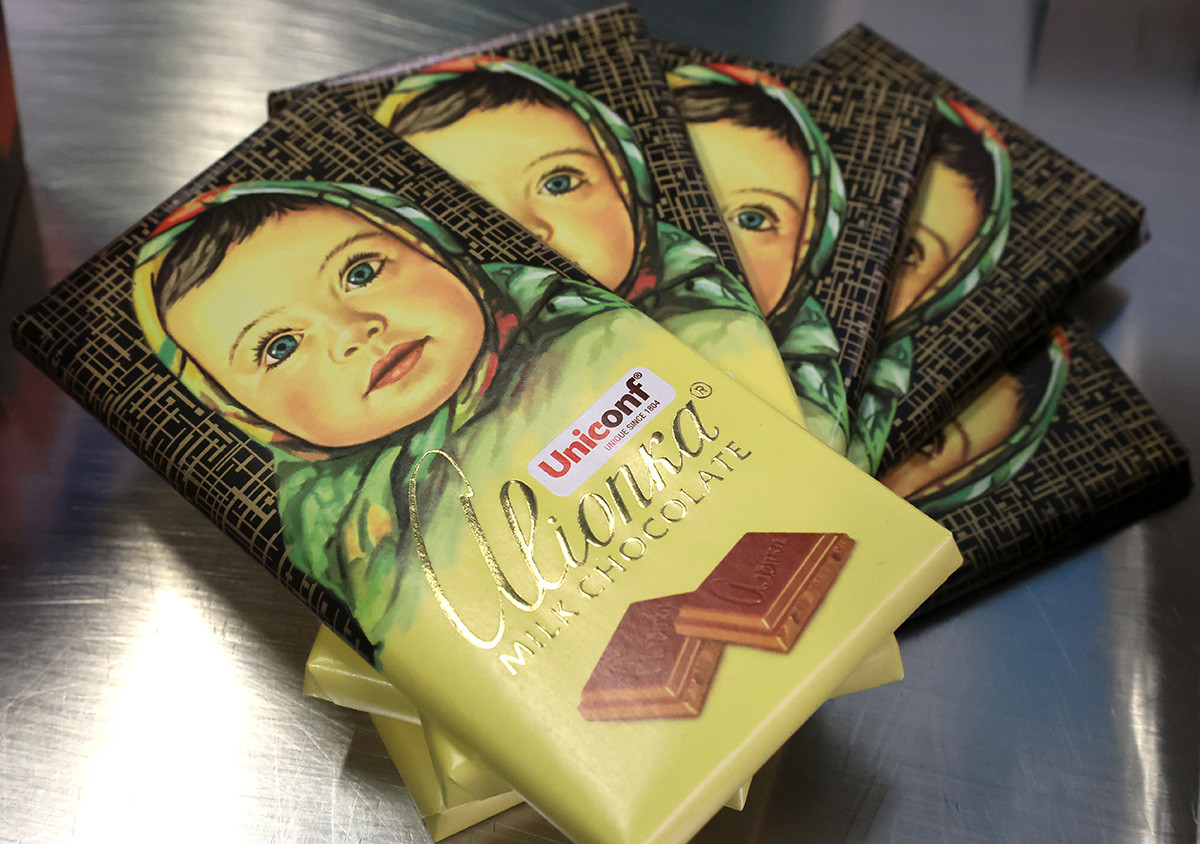
Chocolate "Alyonka" at the confectionery factory "Red October" in Moscow
Vitaly Belousov/SputnikThe chocolate was produced at various factories across the USSR, including Rot Front and Babaevsky confectionary companies, but after the collapse of the Soviet Union, the trademark went to Red October.
These days, Alenka has a chain of brand shops, which, in addition to the classic chocolate and its variations, sell other sweet treats made by Red October and other confectioners.
5. Pobeda watch
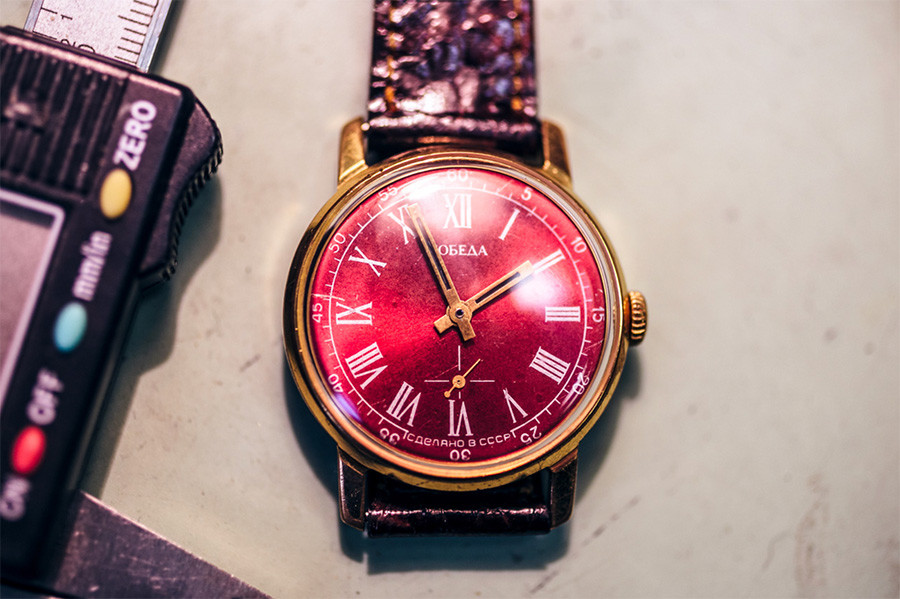
“For as long as this watch keeps going, I will live, mother,” poet and war veteran Sergei Orlov said of a Pobeda mechanical watch with a round dial that his mother presented him in 1946. Incidentally, the watch served him for over 30 years, up to his death, when Orlov had a heart attack, and the watch broke when he fell.
The production of the Pobeda (Victory) watch was launched at a Penza plant in 1945, in commemoration of the victory in the Great Patriotic War. The first batch consisted of 10,000 pieces. Each watch sold for 475 rubles, which was higher than the average monthly salary at the time.
In the 1950s, Pobeda watches were produced at the Second Moscow Watch Factory, as well as at the Petrodvorets and Kuibyshev watch factories. As output increased, the price went down: in 1956, the classic model of a Pobeda watch cost 342 rubles. Then Pobeda watches began to be issued for official Party use, with everyone - from engineers to shepherds - receiving them. Still, each gift was quite a big deal. In addition, 17 models of this watch were produced for export to China and other countries.
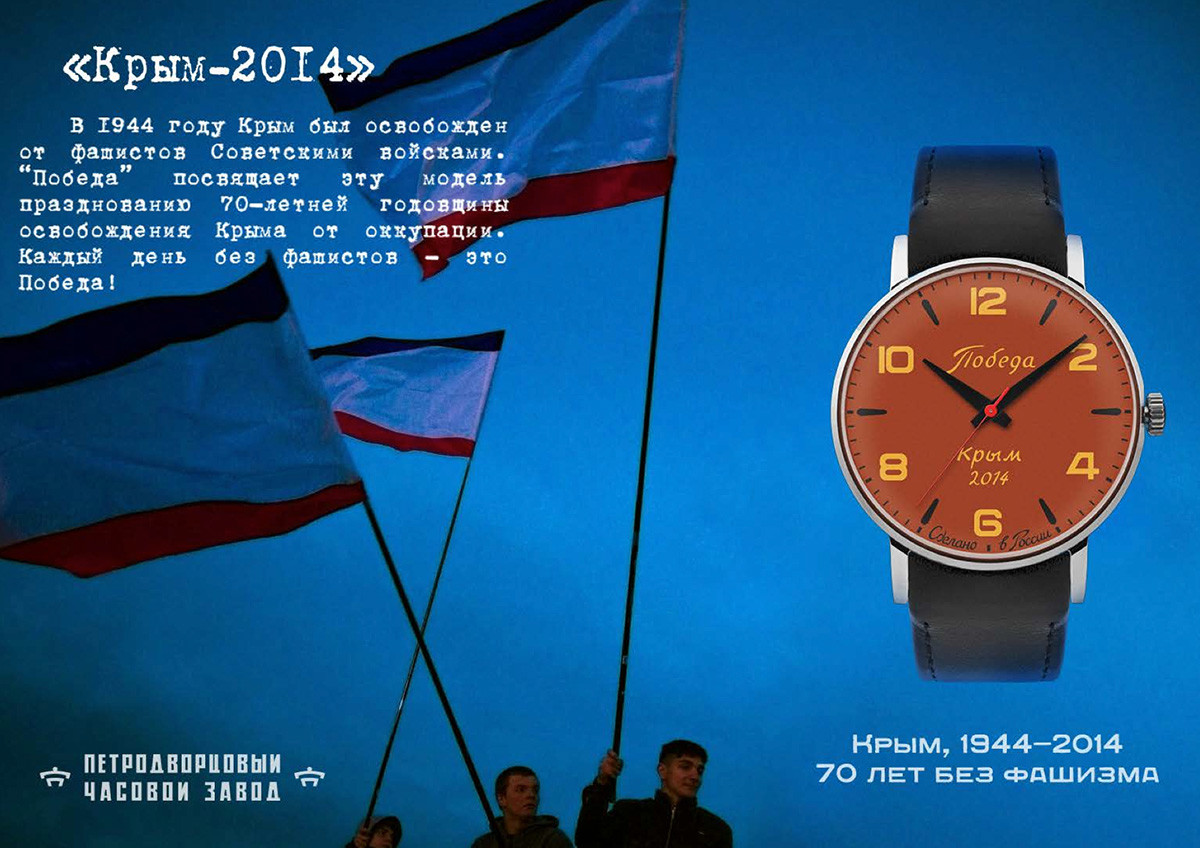
Pobeda's future trajectory was the same as that of many other Soviet brands: in the early 1990s, as foreign watches began to appear on the market, it lost market share.
In 2014, the Petrodvorets Watch Factory revived the production of Pobeda watches, except this time they are no longer mechanical, but quartz. Prices range from 7,000 to 23,000 rubles ($100 to $309). The model range includes the classic version, as well as a pink women's watch and a limited edition called “Crimea 2014”, which commemorates the year Crimea reunited with Russia.
READ MORE: Watches from the Soviet Union
6. Druzhba processed cheese
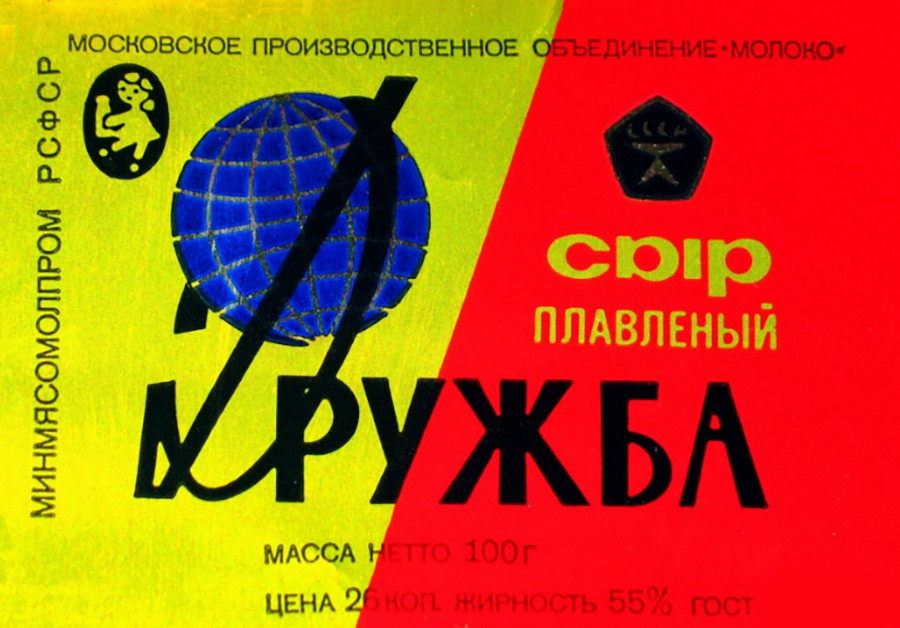
Druzhba processed cheese was an ideal ingredient for many recipes popular with Soviet housewives, and a perfect snack to go with alcohol. Since 1963, it has been produced by the Moscow Processed Cheese Plant No. 1. The soft and tasty processed cheese cost only 23 kopecks, so it quickly became a favorite with Soviet customers.
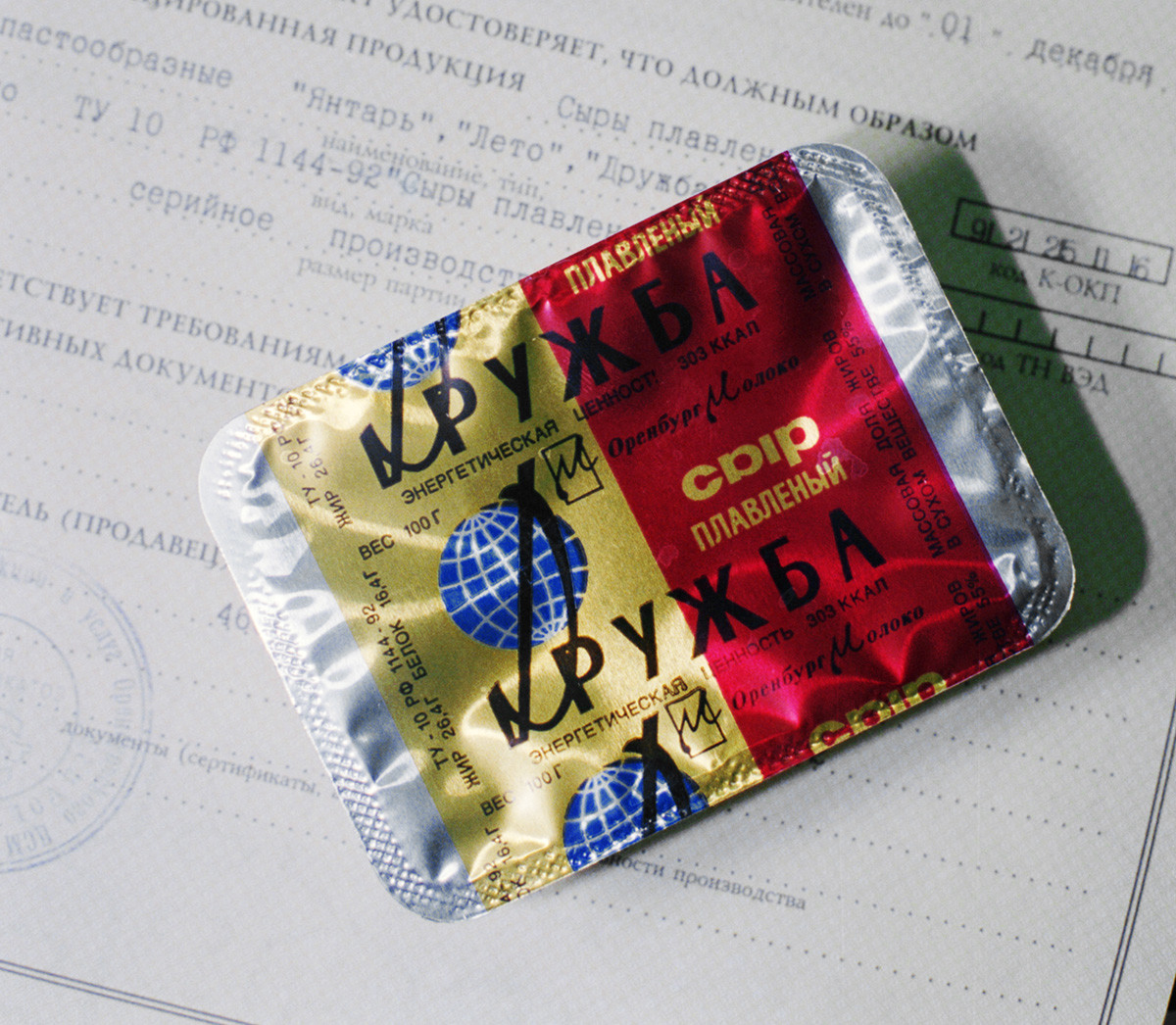
In the 1990s, the plant was bought by the Ostankino Dairy Plant, but by 1996 it had fallen into decline and there was talk of shutting it down. Then it was bought by Vladimir Korsun, a former engineer of the Soviet production association, Moloko, which had invented Druzhba in the first place. The factory was renamed Karat, and it continues to produce a variety of processed cheeses that can be found in any supermarket in Russia.
READ MORE: 10 Russian cheeses you've GOT to try
7. Ptichye Moloko cake
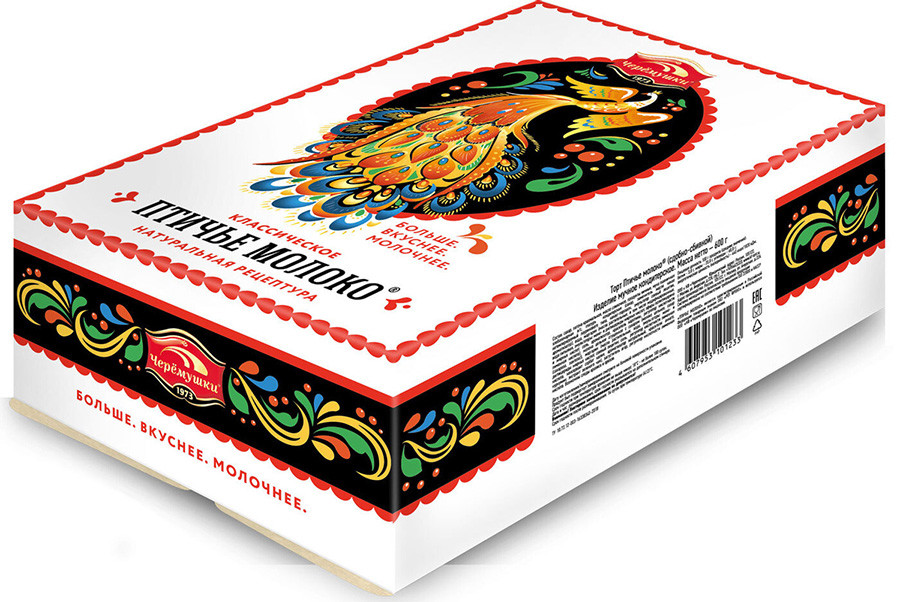
The recipe for this delicate soufflé cake covered in chocolate glaze was perhaps the most popular dessert at any festive occasion in the USSR. It was created in 1978 by Vladimir Guralnik, chef of the Prague restaurant in Arbat Street in central Moscow, and four years later he received a patent for his culinary creation.
Ptichye Moloko, which translates as ‘bird's milk’, was produced in batches of 2,000 cakes a day and sold in boxes emblazoned with the image of the Firebird. According to Guralnik, one day a 15 kilo Ptichye Moloko cake was made for Soviet leader Leonid Brezhnev's jubilee birthday.
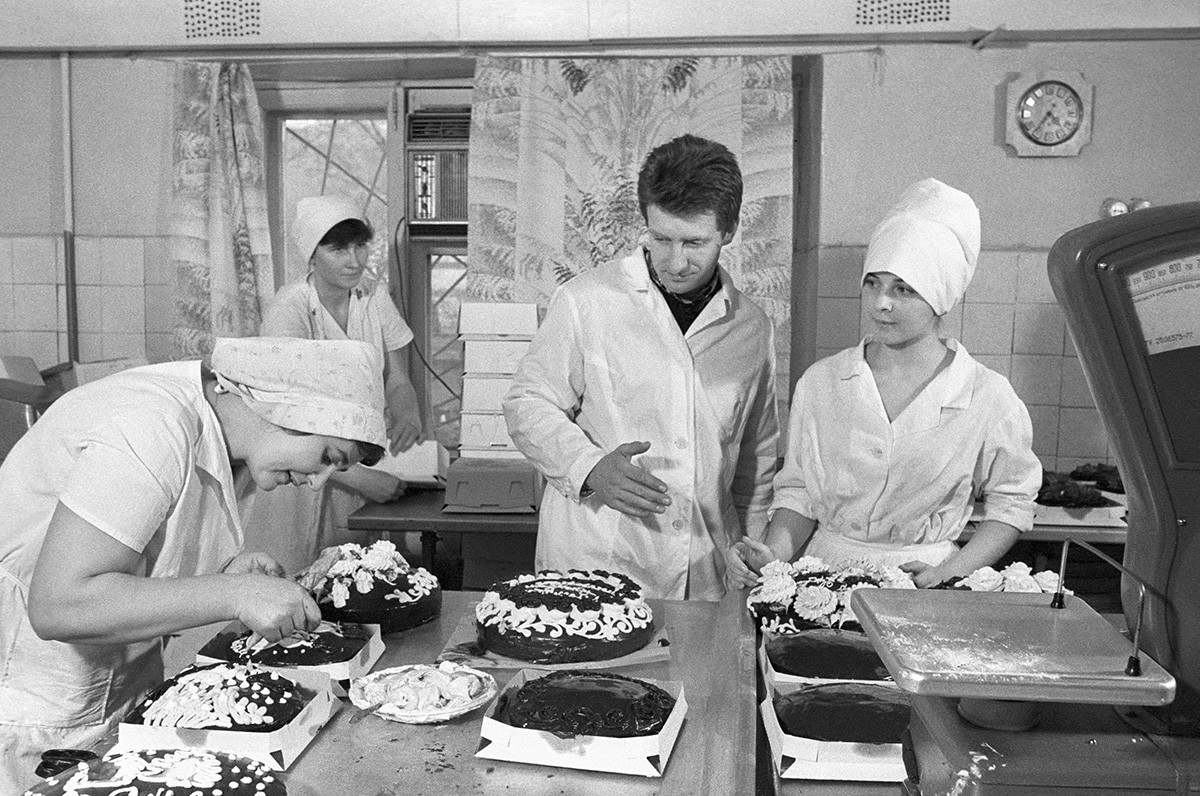
“I don't know if he liked the cake, but that was all he could eat with his dentures constantly falling out,” the magazine Dilettant quotes Guralnik as saying.
These days, Ptichye Moloko cake is a national favorite produced by different companies, but with a large amount of preservatives added.
READ MORE: Are you curious what ‘bird’s milk’ tastes like? Try this legendary Soviet cake
8. Stolichnaya vodka

Stolichnaya vodka from the Moscow Liqueur and Vodka Distillery. 1970
Yu. Levyant/SputnikThe gold letters against a background featuring the building of the famous Moskva Hotel in central Moscow (currently a Four Seasons hotel) are known all over the world. They can be seen on a bottle in the hands of Billy Bob Thornton in Bad Santa, Charlie Sheen in Two and a Half Men and in other Hollywood films. Between 1973 and 1981, this vodka was sold in the U.S., with deliveries set up by PepsiCo, and sales reaching a total of $25 million.
READ MORE: What’s the story behind the iconic Stolichnaya vodka brand?
The recipe and the trademark of this famous vodka were developed in 1938. It was first bottled in 1941 in besieged Leningrad, but its mass production began only two years later - in 1943. Stolichnaya was considered an upscale vodka due to its price of three rubles, which was 30-50 kopecks more than its competitors.
In the 1970s, this vodka was popular in the United States, and it even had its own marketing slogan: "Only vodka from Russia is genuine Russian vodka"! It was also then that Stolichnaya vodka topped a prestigious rating of the world's alcohol brands - 100 International Top Spirits Brands - says the Soyuzplodoimport website.
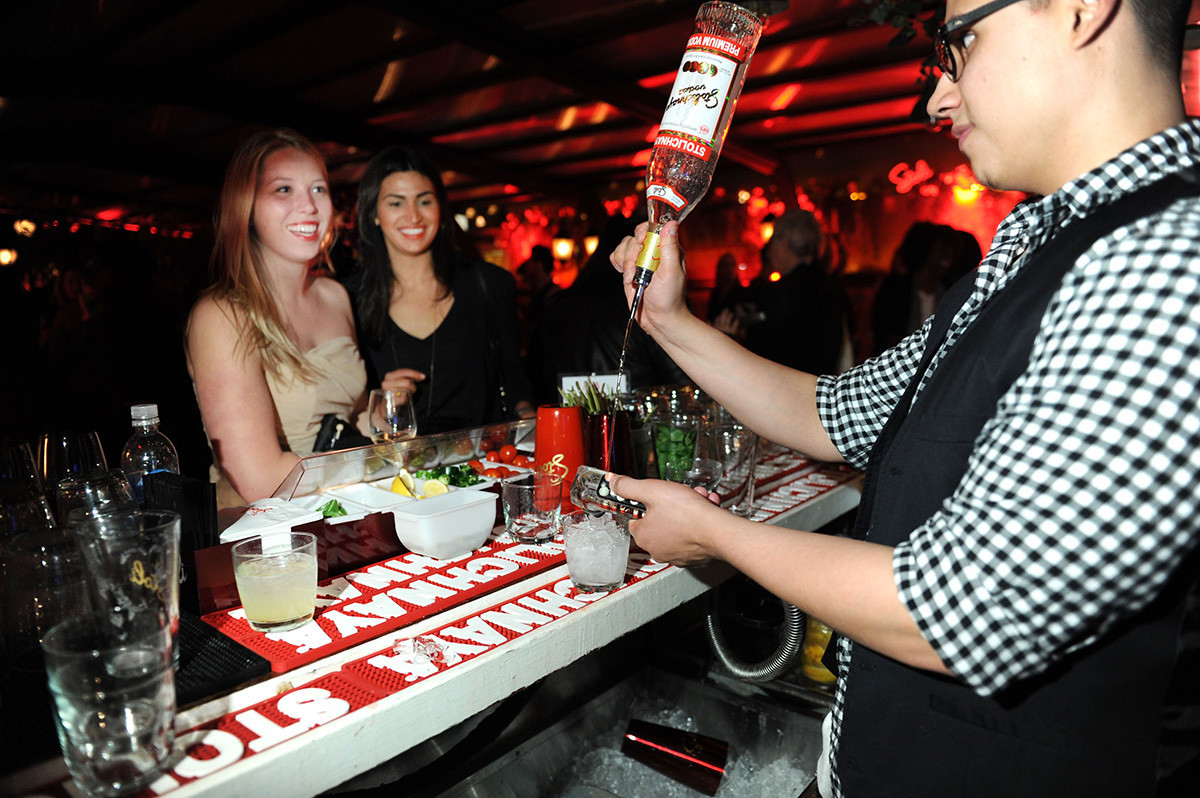
The Tribeca Film Festival 2012 After-Party For Trishna, Hosted By Stolichnaya Vodka. New York City, 2012
Getty ImagesIn the 1990s, the Soyuzplodoimport foreign trade association, which had been producing Stolichnaya for decades, lost its right to the brand after the company was incorporated. For several years after that, vodka by the same name could be produced by anyone. In 1997, a private company of the same name bought the rights to the brand and sold them to its other legal entity, Spirits International, from the Netherlands. For 20 years the Stolichnaya brand belonged to a private global company.
In 2018, the sale of the rights to the brand was declared illegal, and the state transferred Stolichnaya to the new federal state enterprise (FKP) Soyuzplodoimport, which controls the production of this vodka and its quality both inside Russia and abroad.
9. Bolshevichka suit
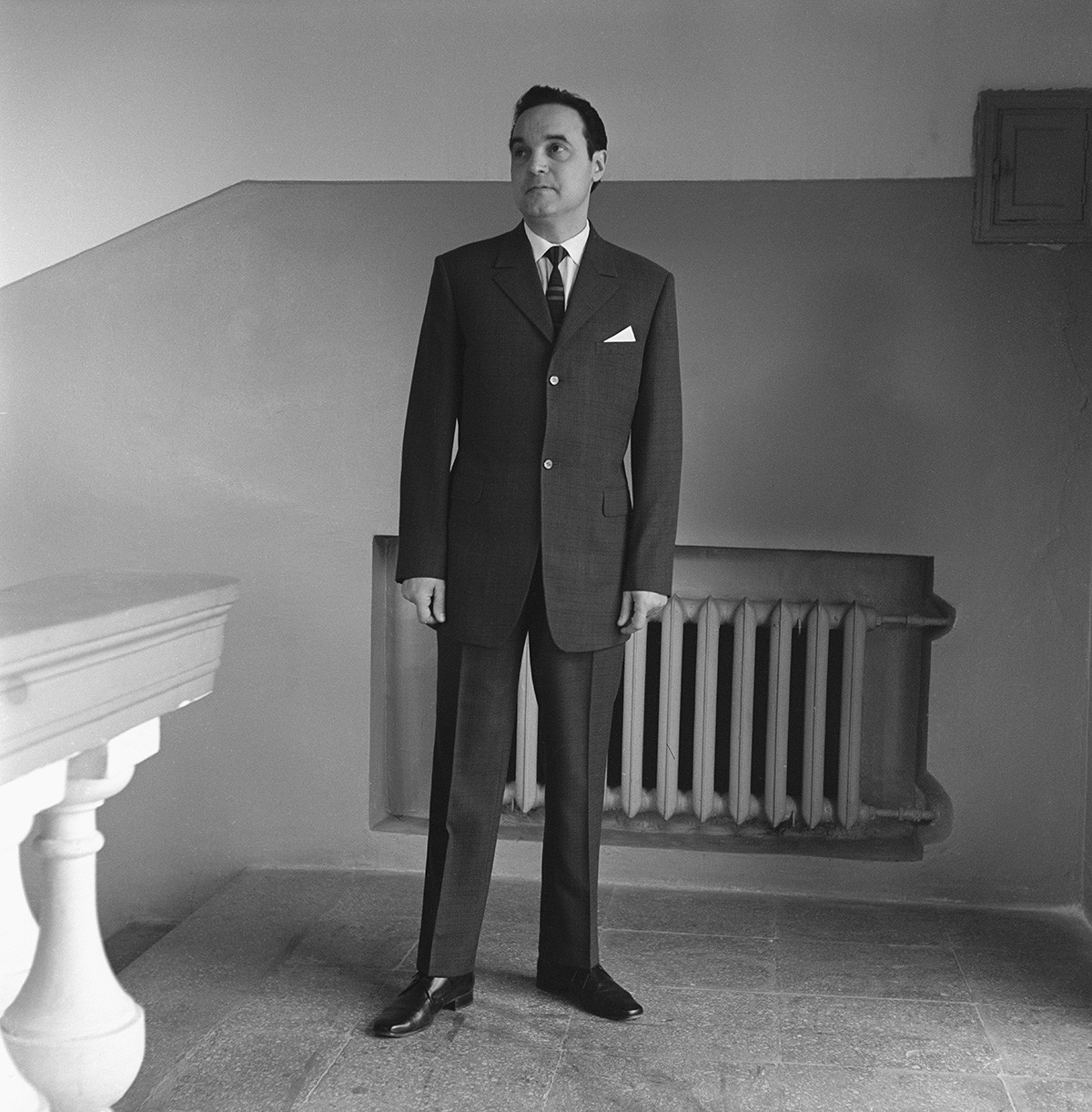
Clothing factory "Bolshevichka" for sewing men's suits
Yuri Artamonov/SputnikBolshevichka has been making its trademark no-frills jackets, trousers and coats from easy-care fabrics since 1929. During the Great Patriotic War, it produced tunics and overcoats for Red Army soldiers, and in 1945 it made uniforms for participants in the Victory Parade.
In the 1970s, Bolshevichka tailor shops could be found in most major Moscow department stores, and this factory made uniforms for the Soviet Olympic team at the 1980 Moscow Olympics.
Starting from the 1980s, Bolshevichka began working with foreign companies from France and Italy, and in the 1990s it opened its own chain of stores.
These days, the brand continues to sell men's suits at reasonable prices - starting at 20,000 rubles ($268).
10. Ural motorbike
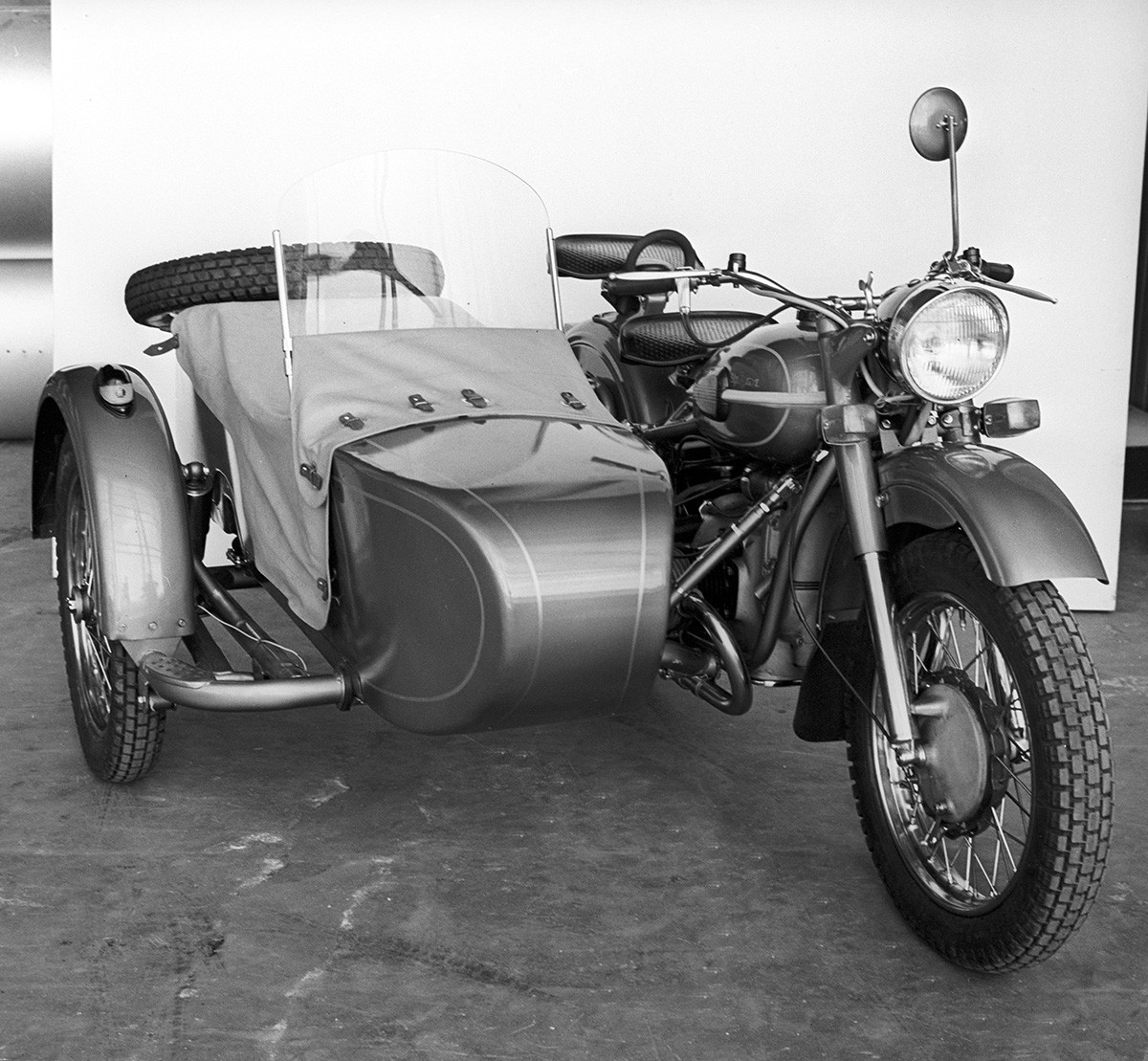
Motorcycle "Ural-3 M66". Products of the "Irbit Motorcycle Factory"
M. Filimonov/SputnikThese exciting bright motorbikes with sidecars count celebrities like Brad Pitt and Steven Tyler among their fans. They’ve been produced at the Irbit plant since 1941, and at first the model was intended for the military, but then it began to be produced for civilians, and was manufactured up until ... you guessed it, the 1990s.
After the collapse of the Soviet Union, the plant went bankrupt, but by 2006 the new owners had revived production, purchasing some of the components abroad. That same year they produced 1,755 motorbikes; all of which were sold abroad.
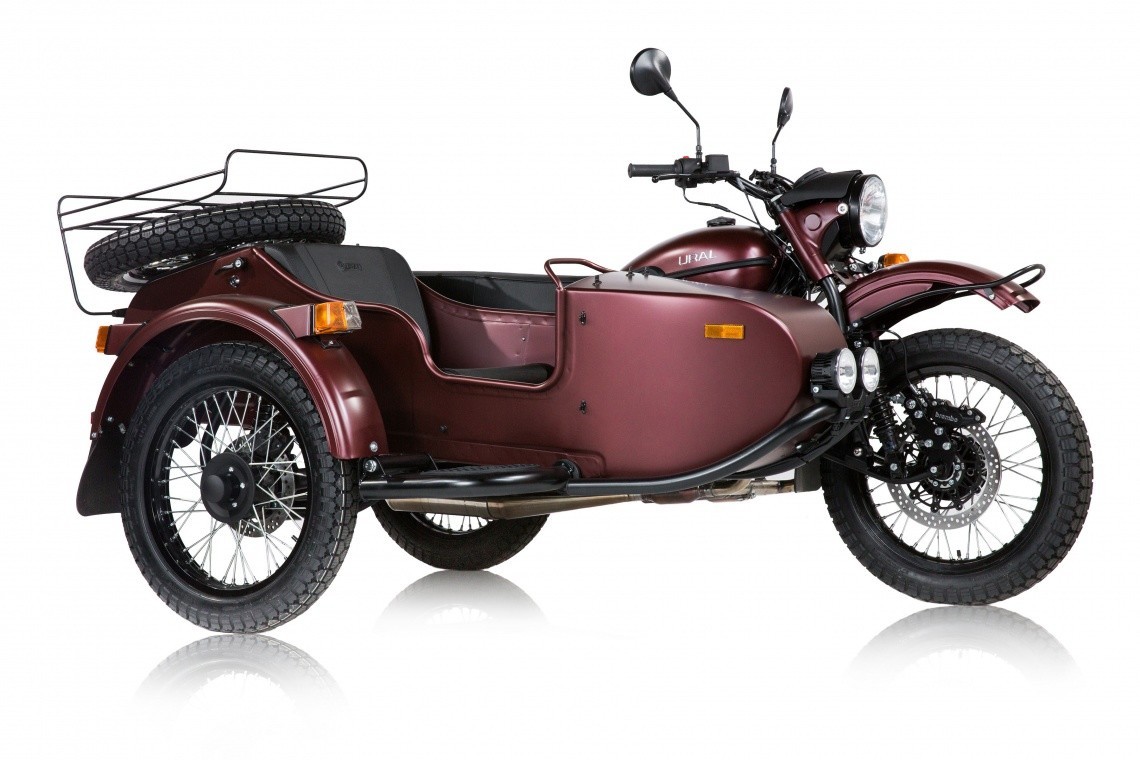
Ural GEAR UP 2021
uralmoto.ruProduction has decreased from 130,000 to 1,200 bikes per year, and prices for Ural motorbikes start at 821,000 rubles ($10,800). They are successfully sold in the U.S., Australia, Japan and other countries. However, in Russia, the Ural bike is not quite as popular due to its high price, and also because fans of the original Soviet Urals are opposed to any modifications.
READ MORE: The story of the ‘Ural’, the USSR’s most popular motorbike everywhere… except Russia!
If using any of Russia Beyond's content, partly or in full, always provide an active hyperlink to the original material.
Subscribe
to our newsletter!
Get the week's best stories straight to your inbox
